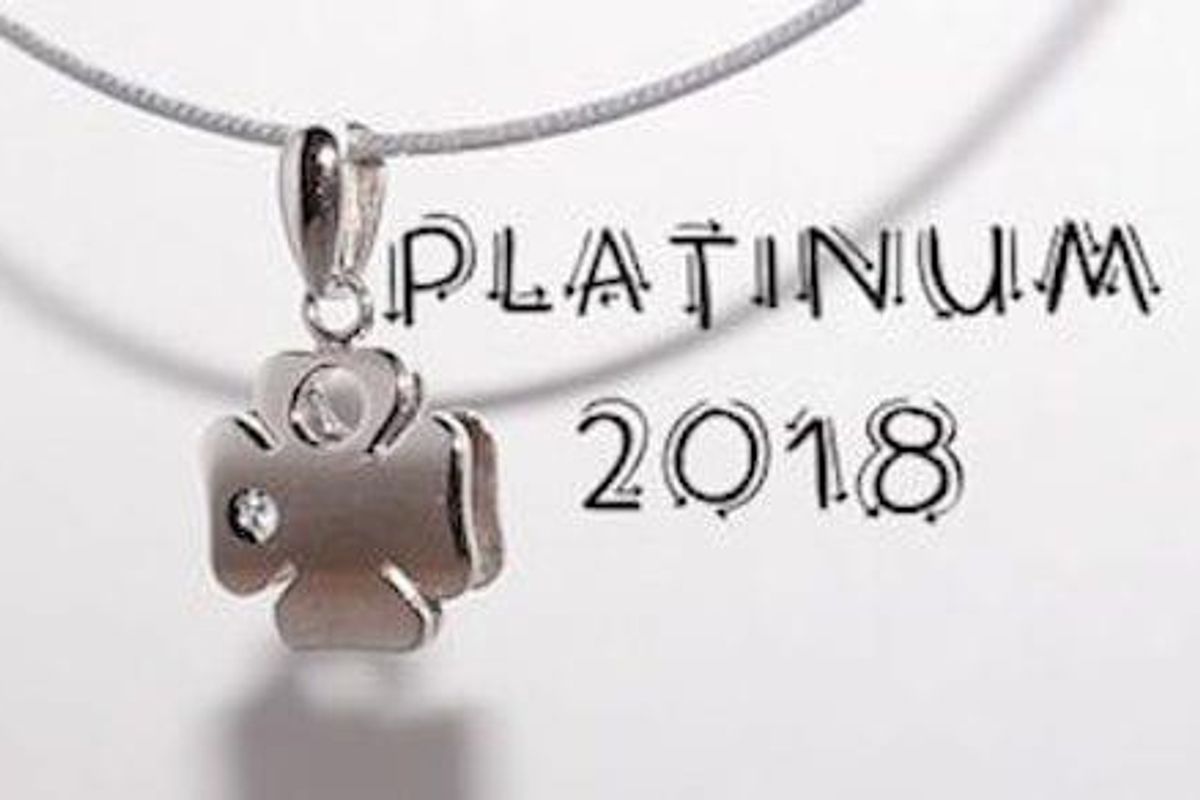
The World Platinum Investment Council released its Platinum Quarterly Q1 2018 report, showing a decline in supply and demand in the first three months of the year.
Thanks to South African mine supply falling to its lowest level since 2016 in Q1, supply will tighten this year compared to last, reported the World Platinum Investment Council (WPIC) on Monday (May 14).
According to the report, refined production fell by 0.7 percent year-on-year to 1,405,000 ounces in Q1 2018.
“A fire at a South African producer’s furnace in February this year resulted in a build-up of concentrate, reducing refined production in the quarter,” says WPIC.
“This was partly offset by ongoing operational improvements across the mines on South Africa’s Western-limb – including the extraction of higher-grade ore, higher concentrator recoveries and improved stoping efficiencies. South African supply decreased by 3 percent year-on-year to 985,000 ounces overall,” WPIC adds.
Output from North America also fell in the first quarter, slipping 5 percent year-on-year to 90,000 ounces. The dip was perpetuated by the closure of a mine in Sudbury in 2017 after if reached end of life.
Russia was able to bump up supply in Q1 by increasing 10 percent year-on-year, ticking up 165,000 ounces in the first quarter of 2018. The country owed its rise to the reconfiguration of downstream processing facilities that had negatively impacted on production volumes in the prior year period.
Production was stable amongst all other regions, with a minor increase of 2,000 ounces in producer inventory giving the total mining supply a 3 percent boost to sit at 1,400,000 ounces. Secondary supply increased by 7 percent to reach 450,000 ounces in Q1. While this is a strong increase from this time last year, it is still down 13 percent from Q4 2017.
Looking forward in terms of supply, WPIC has revised its forecast for 2018 because, despite a weak Q1, they believe mine supply from South Africa will be higher for the full year than they previously thought.
“There are three reasons for the revision. Firstly, a fire at a producer furnace reduced refined output in the first quarter but this locked-up material will be processed during 2018. Secondly, the improved operating conditions in 2017 are expected to continue into 2018 as higher mining efficiency from improved safety and an improved process for the suspension of operations to investigate safety incidents are expected to be maintained in 2018,” states WPIC.
“Finally, the completion of mine closure programmes in 2017 has increased the focus and efficiency on the remaining, more consolidated, operations and start-up production. Although first quarter supply at 985, 000 ounces was the lowest for eight quarters, the forecast 2018 mine supply from South Africa has been revised up from 4,175, 000 ounces to 4,355, 000 ounces,” they added.
That said, WPIC looks for the supply surplus to fall to 180,000 ounces this year from the revised 315,000 in 2017.
On the demand side, Q1 2018 saw platinum demand slip 1 percent year-on-year to 1,975, 000, thanks to lower automotive and investment demand which was, “not completely offset by gains in jewellery and industrial demand,” the report noted.
Automotive demand decreased from 875,000 ounces in Q1 last year to 840,000 ounces in Q1 2018 – a 4 percent dip.
This slide was mainly due to Western Europe, which is the largest market, suffering the greatest reductions in demand, while small growth was seen in North America and China, and there was a small decrease in Japan with India stable.
Jewellery demand rose 3 percent from Q1 2017, reaching approximately 640, 000 ounces. All the major platinum jewellery markets (China, Japan, North America and Western Europe) were able to maintain high levels of consumer confidence over the first three months of 2018, despite some mishaps in the stock markets.
“Retail sales growth for all jewellery continued in a strong manner in Asia, as mainland China saw a 7.9 percent increase in Q1’18 compared to the same period in 2017, while sales in Hong Kong and Macau were up by 3.8 percent year-on-year in January and then accelerated in February, up 31 percent year-on-year,” WPIC states.
Industrial demand was also up in the first quarter, rising 4 percent to climb to 435,000 ounces, following growth in chemical catalysis, petroleum refining and other end-uses.
WPIC notes, “expansion of oil refining capacity also elevated net petroleum platinum demand in the RoW last quarter, outweighing a decline in this application in China, where capacity growth slowed. Investment demand In the first quarter of 2018 total investment demand was 60, 000 ounces as robust bar and coin sales were offset by small declines in ETF holdings and stocks held by exchanges.”
Bar and coin demand totalled 80,000 ounces in Q1’18, with coin sales aided by the US Mint making both bullion and proof platinum American Eagle coins available during the first quarter.
Looking forward for demand, WPIC predicts that global platinum demand will be marginally higher in 2018 than 2017, as gains in industrial (up 95,000 ounces) and jewellery (up 50,000 ounces) demand will offset declines in automotive (down 105,000 ounces) and investment (down 10,000 ounces) demand.
“Industrial demand is anticipated to recover by 6 percent year-on-year to 1,750, 000 ounces, as refinery closures which held back net petroleum demand in 2017 are not repeated and chemical, glass and other end-uses also see gains,” WPIC states.
“Jewellery demand is forecast to increase 2 percent to 2,510,000 ounces this year as continued growth is expected in North America, Europe and India, and Chinese demand is projected to stabilise. Automotive demand continues to slip, falling 3 percent to 3,285,000 ounces, as growth in commercial vehicles is insufficient to offset lower demand from passenger cars,” they added.
As of 10:30 a.m. EST, platinum was down 1.54 percent, trading at US$895.00 per ounce.
Don’t forget to follow us @INN_Resource for real-time news updates!
Securities Disclosure: I, Nicole Rashotte, hold no direct investment interest in any company mentioned in this article.